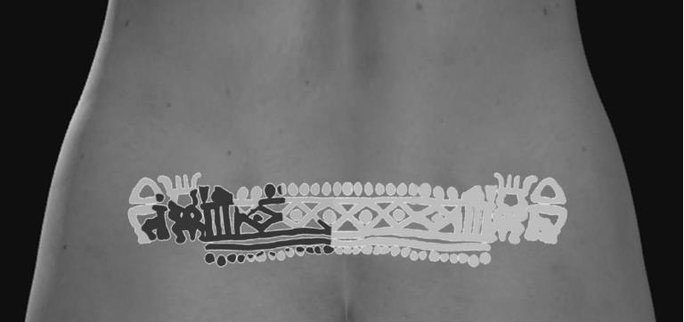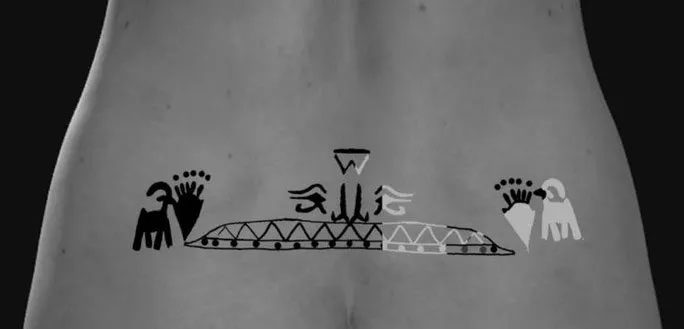Scientists have perfectly recreated the soft waist area adorned with strange tattoos of two Egyptian girls who were mummified around 3,000 years ago.
According to Science Alert, the two women were brought from an ancient town along the Nile River, each bearing a tattoo on their lower back that data suggests was “fashionable” during their time. Their identities remain unknown, but due to the mummification, these Egyptian girls must have been noblewomen.
The two Egyptian girls were excavated from a site known as Deir el-Medina, where one was discovered a century ago, but it was only recently that experts noticed unusual black marks on her skin.

It took scientists a century to realize the strange skin pattern on the Egyptian girl’s lower back was a tattoo – (Photo: The Journal of Egyptian Archaeology)
Just below the lower back, slightly above the buttocks, is a tattoo strip featuring a diamond pattern along with various motifs, resembling some designs carved on the ceilings of tombs from that era.
The second mummy was analyzed in 2019, and with infrared imaging techniques, her lower back also revealed symmetrical patterns. Researchers believe the tattoo depicts a serene scene of the banks of the Nile River, overseen by an all-seeing eye – representing the Egyptian god Horus, who symbolizes healing, protection, and happiness.

The tattoo of the second Egyptian girl depicts the tranquil banks of the Nile River – (Photo: The Journal of Egyptian Archaeology).
These are not the first girls found with tattoos. The first tattooed mummy was discovered in 1891, and since then, seven others have been unearthed from Deir el-Medina, including the two aforementioned Egyptian girls.
The team of scientists, led by Associate Professor Anne Austin from the University of Missouri in St. Louis (USA), stated in The Journal of Egyptian Archaeology that the aforementioned tattoos served as an ancient magic intended to protect the girls.
Only females bore these tattoos, as their significance, particularly the lower back tattoo, may have been to provide protective strength during childbirth and motherhood. This process has always been hazardous for women, especially in ancient times.
Some girls had well-preserved skin that was completely smooth, while others were covered with as many as 30 tattoos. Scientists have yet to determine the reasons for this variation.
However, they affirm that regardless of the circumstances, these tattoos remain highly valuable – evidenced by their intricacy, even though they were created 3,000 years ago.





















































